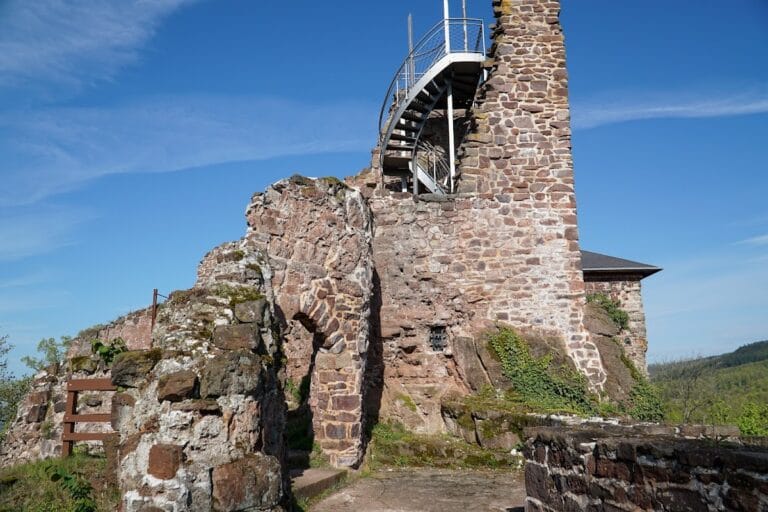Herzberg Castle: A Historic Medieval Fortress in Germany
Visitor Information
Google Rating: 4
Popularity: Low
Google Maps: View on Google Maps
Country: Germany
Civilization: Unclassified
Remains: Military
History
Herzberg Castle is situated in the town of Herzberg am Harz in modern-day Germany. It originated as a medieval fortress created by the German civilization in the early 11th century, most likely between 1024 and 1029. Initially, it was constructed as a hunting lodge, possibly commissioned by King Lothair III of Süpplingenburg, who later became Emperor.
The castle was first recorded in historical documents in 1143. In 1158, control of the fortress passed to the House of Welf, an influential noble family, through an exchange of lands between Emperor Frederick Barbarossa and Duke Henry the Lion. The Welf family retained possession of the castle continuously for over seven centuries, until 1866. Throughout this period, Herzberg Castle served several important political and residential purposes. In 1218, it briefly functioned as an imperial residence under Empress Maria of Brabant. Additionally, it was used as a widow’s residence for notable duchesses including Marie, widow of Emperor Otto IV, and later for the widow of Duke Albert the Great.
From 1290 onward, Herzberg Castle became the seat for the Brunswick-Grubenhagen branch of the Welf dynasty, serving as the principal residence of the dukes of this line until 1596. A significant event in its history was the great fire of 1510, which destroyed the original medieval structure. Although the ducal family escaped unharmed, two attendants lost their lives. The castle was reconstructed by 1528, adopting architectural styles of that period.
Duke George of Brunswick-Lüneburg lived at the castle until his death in 1635, and his son Ernest Augustus, who would become the first Elector of Hanover, was born there in 1629. By 1714, the castle ceased to be a residence for the ducal family and was repurposed for practical uses, including serving as a granary. Later, from 1852, it became the seat of the district court, known as the Amtsgericht of Herzberg.
In 1900, a museum dedicated to the castle’s history and regional heritage was established within its walls. The collections highlighted the Welf dynasty, local forestry, arms manufacturing, and organ building traditions. The castle suffered significant destruction during World War II when a nearby munitions factory exploded in April 1945, destroying the roof and much of the museum’s collections. Further damage occurred two years later due to the demolition of nearby military bunkers.
Starting in 2006, extensive restoration efforts began to preserve and rehabilitate the castle. A large-scale renovation project commenced in 2017, supported by state and federal funding, during which archaeological work uncovered foundation walls belonging to the castle’s original medieval phase. Today, Herzberg Castle continues to perform civic functions while also acting as a cultural site celebrating its long history.
Remains
Herzberg Castle today presents as a quadrangular complex, comprising four wings that surround a rectangular inner courtyard measuring roughly 40 by 58 meters. The lower sections, including the basement and ground floors, are built primarily from sandstone, providing a sturdy base. Above these, three of the wings rise in traditional timber framing, a method where wooden beams form the framework, visible and painted in their historic ochre color. The fourth wing features stone construction extending into the upper floors, distinguishing it from the timber-framed sections.
Access to the castle is through an original defensive arrangement featuring a two-story gatehouse connected to a barbican, or outer defensive wall, and complemented by an imposing gate tower. This entrance preserves the medieval layout designed for security. At the eastern corner stands the Uhrturm, or Clock Tower, recognizable by its three upper timber-framed levels capped with a lead-covered lantern dome. This tower remains a signature element of the castle’s silhouette.
Remnants of the early medieval fortress are still visible nearby. To the south, a deep defensive ditch survives, measuring up to five meters in depth, tracing the castle’s original fortifications. Along the southeast side, an earthwork known as a Vorwall extends for about 80 meters. This raised embankment reaches two and a half meters high and five meters wide at its base, representing an important part of the early defensive system.
The castle’s roof is adorned with red hollow tiles, a traditional roofing material, while six copper water spouts can be found on the courtyard-facing side of the Sieber wing, serving both practical and decorative functions. Inside, the south wing contains a chapel room that has been adapted into a café and restaurant. The large ceremonial hall, or Rittersaal, located in the Stammhausflügel, accommodates 130 seats and combines historic paintings with modern audiovisual equipment for events. The Marstall wing continues to house the Amtsgericht, the local district court.
Archaeological excavations, especially during recent renovations, have revealed multiple foundations beneath the present structure, offering insight into the various construction phases of the original medieval castle. The site sits atop the Schlossberg, a wooded ridge at 275 meters above sea level. The geology beneath includes soluble rock layers that cause gradual landslides, introducing some instability to the foundations over time. Decorative elements have been carefully restored, including the original timber framing’s ochre paint, coats of arms on the gatehouses, and the distinctive copper water spouts. The museum within the castle displays artifacts such as a facsimile of a 12th-century gospel book associated with Henry the Lion, a 16th-century cradle linked to the Welf family, and exhibits related to regional crafts and history.










